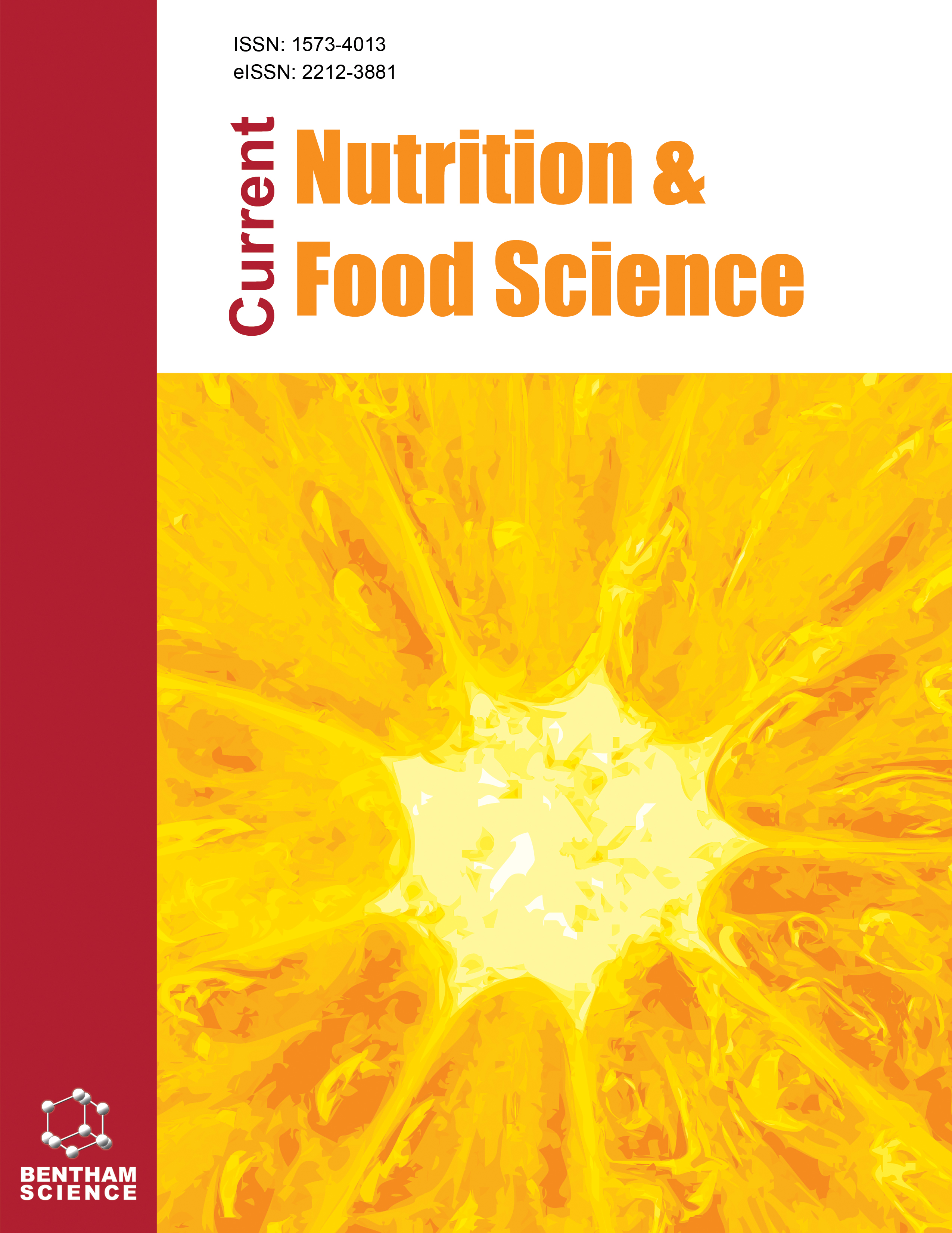- Home
- A-Z Publications
- Current Nutrition & Food Science
- Previous Issues
- Volume 6, Issue 1, 2010
Current Nutrition & Food Science - Volume 6, Issue 1, 2010
Volume 6, Issue 1, 2010
-
-
Editorial [ Hot Topic:Phytonutrients in Chronic Disease Prevention (Guest Editors: Torsten Bohn and Daniele Evers)]
More LessBy Torsten BohnNutrition is an important factor determining quality of life and health. In recent years, nutritional strategies have received much attention with respect to the prevention of a number of chronic diseases, including diabetes, cancer, cardiovascular diseases, osteoporosis, and many more. Next to the macro-constituents of the diet such as proteins and dietary fiber, micronutrients and phytochemicals such as polyphenols, carote Read More
-
-
-
Dietary Antioxidants and Oxidative Stress from a Human and Plant Perspective: A Review
More LessAuthors: Christelle M. Andre, Yvan Larondelle and Daniele EversPlants have evolved antioxidant molecules to help them withstand environmental stresses. Humans may also benefit from these defense molecules through their consumption in fruits and vegetables. Dietary antioxidants are indeed believed to play a very important role in the human body defense system, protecting, as in plants, against oxidative damage induced by Reactive Oxygen Species (ROS), which are known to be in Read More
-
-
-
Polyphenols: A Potential New Strategy for the Prevention and Treatment of Anxiety and Depression
More LessFollowing recent evidence that disturbances in oxidative metabolism are involved in anxiety disorders, high anxiety levels and depression, the use of antioxidants has been proposed as a novel approach for the prevention or treatment of these conditions. Polyphenols are naturally-occurring antioxidant substances which can have pharmacological actions on the central nervous system. This mini-review aims to examine the cu Read More
-
-
-
The Metabolic Fate of Apple Polyphenols in Humans
More LessAuthors: Hannah Bergmann, Sven Triebel, Kathrin Kahle and Elke RichlingApples (Malus spp., Rosaceae) and their products contain significant concentrations of polyphenols, which have diverse biological activities and may have important beneficial effects on human health. The main polyphenols in apples are hydroxycinnamic acids, dihydrochalcones, flavonols, catechins and oligomeric procyanidins, although triterpenoids are also present in apple peel and anthocyanins in red apples. Human inte Read More
-
-
-
Carotenoids in Photooxidative Stress
More LessAuthors: Silke D. Spirt, Kaya Lutter and Wilhelm StahlCarotenoids are secondary plant constituents and more than 700 different compounds have been identified. They are synthesized by plants, where they serve as colorants for fruits and leaves, bacteria, fungi and algae. In nature carotenoids are important biological compounds due to their provitamin A activity, antioxidant properties and accessory functions in the light harvesting system of plants. Considerable amounts of c Read More
-
-
-
Methods for Assessing Aspects of Carotenoid Bioavailability
More LessAuthors: E. Biehler and T. BohnCarotenoids are a group of C-40 isoprenoid-based molecules with >600 representatives in nature, of which approximately 30 are of importance within our daily diet. This class of phytochemicals has recently attracted much attention due to potential health beneficial effects associated with carotenoid consumption, including reduction of cardiovascular diseases, protection from age-related macular degeneration, various typ Read More
-
-
-
Food Toxicity Characterization Using In Vitro Bioassay Effect-Directed Analysis
More LessAuthors: M. Montano and A. C. GutlebFood may be either contaminated with a range of industrial chemicals or contain naturally produced toxic compounds. Even the most sophisticated chemical analyses are not able to perform or contribute to an effect assessment of food constituents. While in environmental research the application of “effect directed analysis” (EDA) and “toxicity identification and evaluation” (TIE) has been widely accepted and applied, th Read More
-
-
-
Naturally Occurring Regulators of Histone Acetylation/Deacetylation
More LessAuthors: Florence Folmer, Barbora Orlikova, Michael Schnekenburger, Mario Dicato and Marc DiederichAcetylation and deacetylation of lysine residues on histones, which are catalyzed by histone acetyltransferases (HATs) and histone deacetylases (HDACs), are epigenetic modifications that play a very important role in the regulation of gene transcription. Perturbation of the balance between histone acetylation and deacetylation leads to a myriad of diseases, including cancer, AIDS, malaria, neurodegenerative diseases, and di Read More
-
Volumes & issues
-
Volume 21 (2025)
-
Volume 20 (2024)
-
Volume 19 (2023)
-
Volume 18 (2022)
-
Volume 17 (2021)
-
Volume 16 (2020)
-
Volume 15 (2019)
-
Volume 14 (2018)
-
Volume 13 (2017)
-
Volume 12 (2016)
-
Volume 11 (2015)
-
Volume 10 (2014)
-
Volume 9 (2013)
-
Volume 8 (2012)
-
Volume 7 (2011)
-
Volume 6 (2010)
-
Volume 5 (2009)
-
Volume 4 (2008)
-
Volume 3 (2007)
-
Volume 2 (2006)
-
Volume 1 (2005)
Most Read This Month
Article
content/journals/cnf
Journal
10
5
false
en


